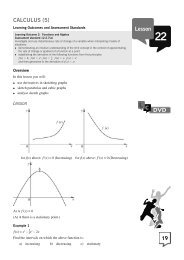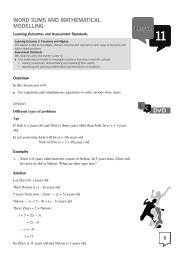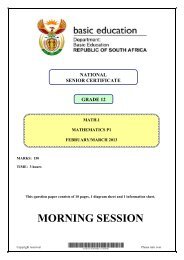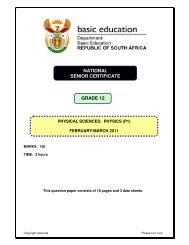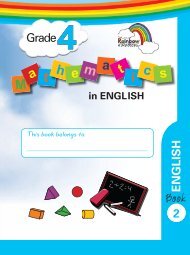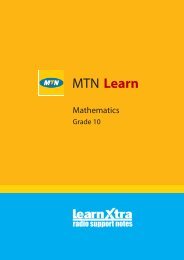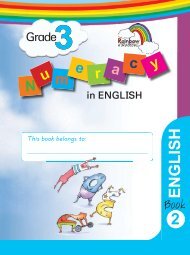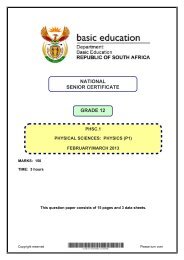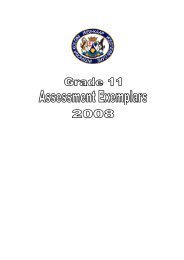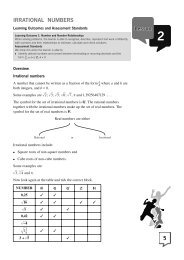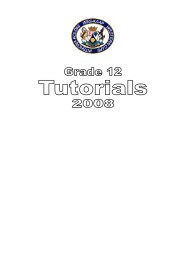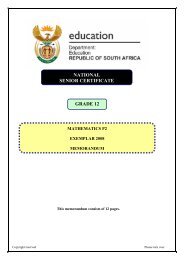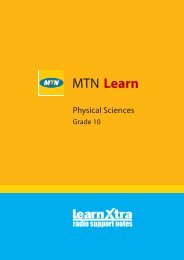Teacher's Guide Module 1 - Maths Excellence
Teacher's Guide Module 1 - Maths Excellence
Teacher's Guide Module 1 - Maths Excellence
You also want an ePaper? Increase the reach of your titles
YUMPU automatically turns print PDFs into web optimized ePapers that Google loves.
.......................ACTIVITY 1.5<br />
Learners find it difficult to answer questions such as those in Activity 1 and 2. Make sure<br />
that the learners take note of the difference in the various ways in which the questions are<br />
asked, because that determines whether they are required to add or to subtract.<br />
.......................ACTIVITY 1.6<br />
The x tables should first be practised thoroughly before starting with Activities 1 and 2.<br />
This Activity could lead to an interesting discussion, as each learner will colour in<br />
differently. Discuss why there can be different possibilities. It is important for learners to<br />
understand that different tables can have the same multiple, for example “fish 24” fits in<br />
with both the 8x and the 12x table.<br />
It will be necessary to fully explain the concept of moving from thousands to ten<br />
thousands (Activity 4) during a class discussion before the work sheets are to be<br />
completed. Let the learners say the numbers in Activities 5 and 6 loudly first, as this will<br />
make it easier for them to answer the questions.<br />
.......................ACTIVITY 1.7<br />
Enough time should be spent on “rounding off”. Learners must be able to see the<br />
“pattern” between rounding off to the nearest 10, 100 and 1000. Use a number line to<br />
explain rounding off to learners who find it difficult to grasp, so that they can physically<br />
see the numbers.<br />
.......................ACTIVITY 1.8<br />
Learners must know their tables, and Activity 1 is an excellent exercise for “drilling” tables.<br />
The learners’ prior knowledge of “multiples”; “factors” and “prime numbers” must be tested<br />
at the start. Make sure that they know the difference between the above-mentioned<br />
before completing Activity 2 - 4. Remember: 1 is NOT a prime number!<br />
The “self assessments” throughout the unit can be a very good indication to a teacher<br />
whether he/she should go on to the next section of the work or not.<br />
The following summarise marks can be used: (Teachers can decide for themselves.)<br />
The two tables tests<br />
The two smaller tests that come after 1.5 no. 3 and 1.8 no. 4<br />
The formal test at the end of the Learning Unit<br />
LEARNING UNIT 2<br />
.......................ACTIVITY 2.1<br />
Take note:<br />
An interesting, additional assignment can be inserted here!<br />
Instruct learners to find out how people in other local cultures count from 1–10,<br />
e.g. the Xhosas, Zulus, Sothos and/or Taiwanese, and Chinese if there are<br />
such learners at the school.



